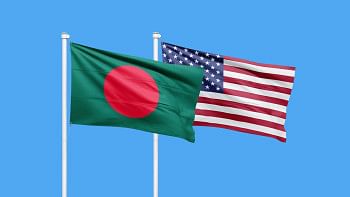Devotion, beauty and opulence of love in Raga Khamaj

Devotion, beauty and the opulence of love are the basis of Raga Khamaj which falls under the same thaat. Based on the theme, the murki or the ornamental beautification of the raga is formed. An artistically refined soul, performing the raga with apt devotion and bliss, can depict shringar rasa or the flavour of romance.
Khamaj, a sarov-sampurna raga, is generally performed at the second prahar of night. The note 'Re' is omitted on arohana while komol 'Ni' is used in avorohana. Its badi swar is 'Ga' while sambadi swar is 'Ni.' The maestros tactfully use the bivadi swar kodi 'Ma' to enhance the beauty of the raga. Its similar raga is “Tilang.”
Khamaj is meant to be a complete surrender to the ultimate through the beauty of its melody. The beauty of Khamaj lies in the expression of love with the softest touch of heart. Pukar is expressed in an artiste's rendition when her/his inner-soul weeps.
Raga Khamaj represents the love between the earthly soul (Radha) and the eternal soul (Krishna). Although expressed in tender, earthly terms, the undying love that Radha and Krishna share has philosophical underpinnings. Radha represents the devotees -- both male and female -- and Krishna represents the divine. Radha's intense love for Krishna symbolises each devotee's passionate longing for ultimate unification with the Creator. Pukar ang of Khamaj is noticed in taar saptak (highest octave) while its richness of emotions is found in mudara (middle octave).
The raga has gained prominence more in the lighter forms of Hindustani Classical Music such as bhajan, thumri, dadra, chhoto dhun, ghazal, tappa, jhula, chaiti and hori. Yet, a few compositions in dhrupad and khayal are found as well.
Mingling tunes of the raga --“Tilang”, “Gorakh Kalyan”, “Jog”, “Desh”, “Jhinjhoti”, “Pahadi” and“Kalavati”-- with the melody of Khamaj, renowned Pandits and Ustads compose and perform the distinctive tunes of “Manjh Khamaj” in varied styles.
A Tagore song “Tomari Gehe Palichho Snehe” is set on Raga Khamaj. A ghazal ang composition “Uchatono Mono Ghar-e Royna,” by Kazi Nazrul Islam is based on the raga. Nazrul Sangeet including “Keno Ka(n)dey Poran Ki Bedonaye” and “Amar Kon Kuley Aj Bhirlo Tori” are also set on the raga.
Popular ghazals like “Faasle Aise Bhi Hongey,” recorded by Ghulam Ali and “Muhabbat Karne Wale Kam Na Hongey,” recorded by Mehdi Hassan are evocative of Khamaj.
Written in the 15th century by the poet Narsinh Mehta, in the Gujarati language, the bhajan “Vaishnav Jan Toh Tehe Kahiye” tells us about the ideals and outlooks of a “Godly Person.” Vocalist Ustad Rashid Khan together with Ustad Shahid Parvez Khan on sitar recorded it. Among others, eminent singers Lata Mangeshkar, Anup Jalota and Bombay Jayashree too recorded the bhajan.
Thumri including “Shyam Sundar Banwari” (recorded by Ustad Rashid Khan), “Kaun Gali Gayo Shyam” (recorded by Pt. Chhannulal Mishra) and “Shyam Bina Nahin Chyan” (recorded by Laxmi Shankar) are based on Khamaj.
Popular Hindi film tracks–“Dil Cheez Kya Hai” (Umrao Jaan), “Mitwa” (Kabhi Alvida Na Kehna), and “Jiya Lagey Na” (Talaash) remind us of the sweet melody of Khamaj. Folk compositions including Lalon numbers “Mawla Boley Daak Roshona” and “Nigur Prem Kotha-ti Shai Ami Shudhai Kar Kachhey” and Kobial Bijoy Sarkar Songs “Amar Mon-e Menechhey” and “Ei Prithibi Jemon Achhey” are based on raga Khamaj.
Virtuoso singer Manna Dey wove the garlands of melody with his rendition of Khamaj songs “Lalita Go” and “Ami Je Jalsha Ghar-e” in pristine style.

 For all latest news, follow The Daily Star's Google News channel.
For all latest news, follow The Daily Star's Google News channel. 



Comments